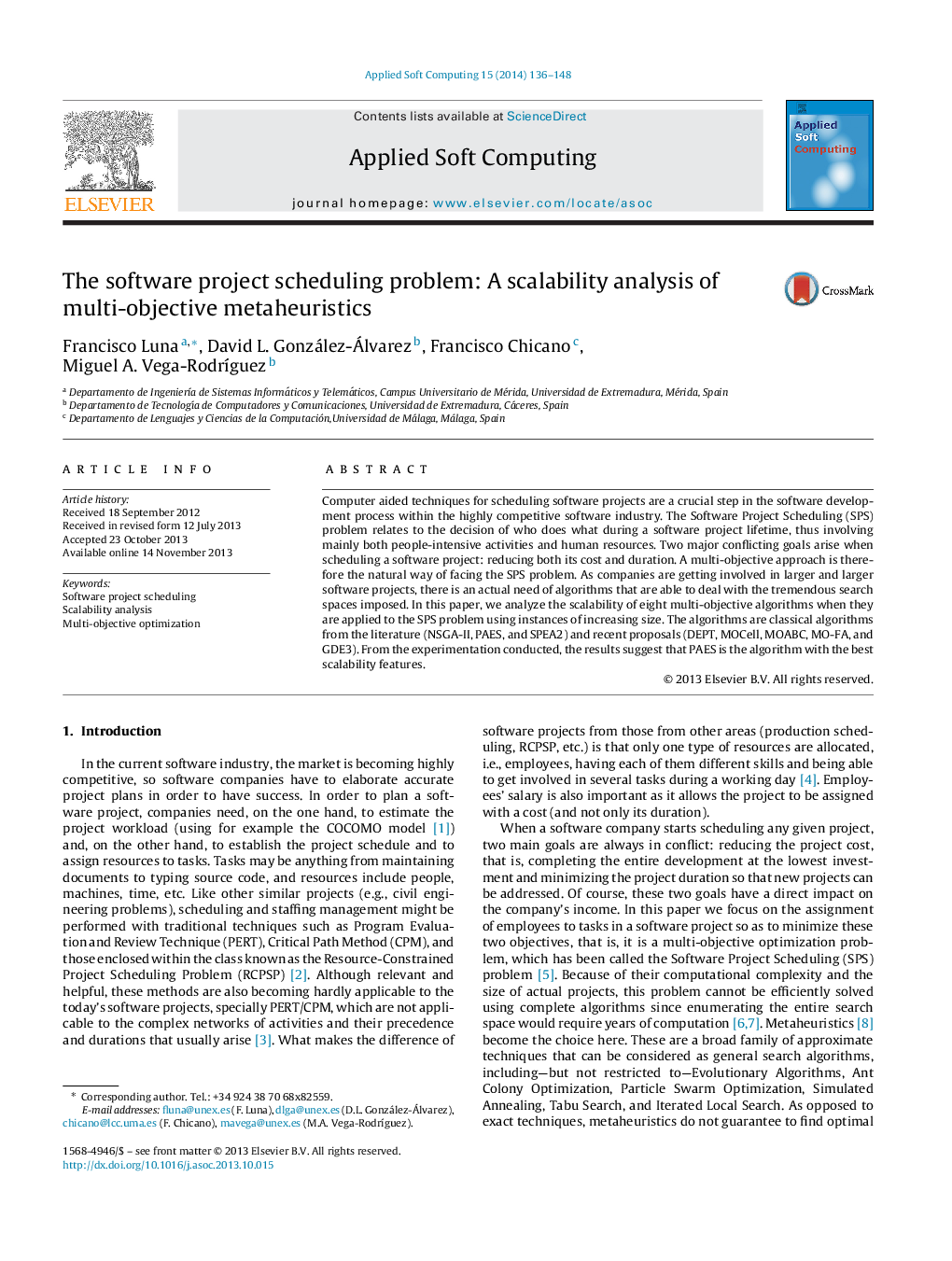| Article ID | Journal | Published Year | Pages | File Type |
|---|---|---|---|---|
| 495506 | Applied Soft Computing | 2014 | 13 Pages |
•We have addressed the Software Scheduling Problem (SPS), which is of outmost importance for current software companies as the software projects are becoming very large.•A scalability analysis of eight multi-objective metaheuristics (NSGA-II, SPEA2, PAES, DE-PT, MO-GA, MOABC, MOCell, GDE3) is performed over a set of SPS instances with up to 256 employees and 512 tasks.•PAES has shown to be the most scalable algorithm: it is able to provide the project manager with the more diverse project schedules.
Computer aided techniques for scheduling software projects are a crucial step in the software development process within the highly competitive software industry. The Software Project Scheduling (SPS) problem relates to the decision of who does what during a software project lifetime, thus involving mainly both people-intensive activities and human resources. Two major conflicting goals arise when scheduling a software project: reducing both its cost and duration. A multi-objective approach is therefore the natural way of facing the SPS problem. As companies are getting involved in larger and larger software projects, there is an actual need of algorithms that are able to deal with the tremendous search spaces imposed. In this paper, we analyze the scalability of eight multi-objective algorithms when they are applied to the SPS problem using instances of increasing size. The algorithms are classical algorithms from the literature (NSGA-II, PAES, and SPEA2) and recent proposals (DEPT, MOCell, MOABC, MO-FA, and GDE3). From the experimentation conducted, the results suggest that PAES is the algorithm with the best scalability features.
Graphical abstractFigure optionsDownload full-size imageDownload as PowerPoint slide
